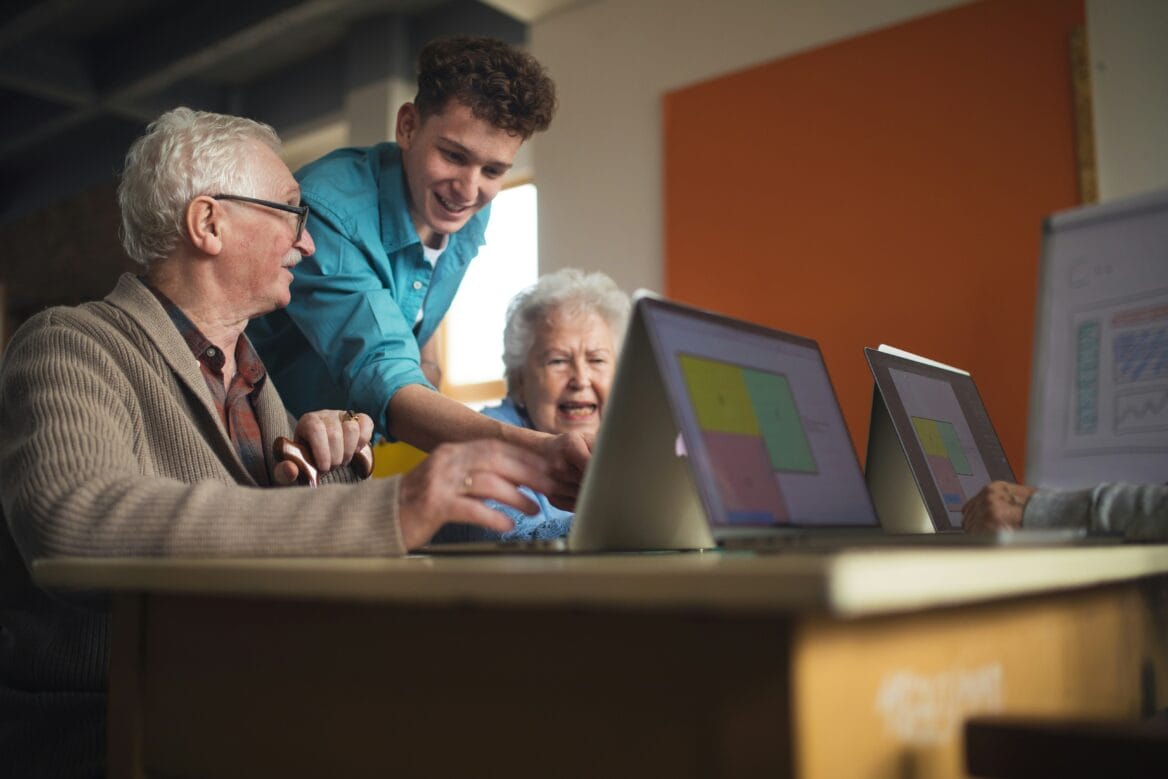Imagine a place where seniors enjoy each day in total comfort and security—easily connecting with family and staff, engaging in stimulating activities, and receiving timely care whenever needed. This is no longer science fiction. Modern IT tools are transforming the daily life of senior living communities.
With global demographics shifting—by 2050, the population aged 65+ is projected to surpass 1.6 billion—the senior housing sector is becoming a strategic asset. According to McKinsey, the industry holds enormous potential to innovate, expand, and deliver better care at sustainable costs through smart technology.
At the same time, projects in AgeTech are driving higher quality of life—ensuring independence, safety, and connection for seniors.
A Forbes 2025 article further indicates that many seniors, especially those over 70, increasingly recognize the value of technology and are willing to pay for digital services that improve their wellbeing.
In this evolving landscape, a Managed Service Provider emerges as a strategic partner. It’s not enough to simply install technology in a community. What’s needed is robust governance, continuous expertise, secure infrastructure, and adaptability. Without a specialized partner, implementation may stall, inefficiencies can arise, and data protection could be compromised.
1. IoT Systems & Smart Sensors: Always-On Safety
In the design of a senior community, IoT sensors work discreetly in the background, with minimal visual impact but enormous value. When an incident like dizziness or a nighttime issue occurs, these systems trigger alerts only if a resident moves outside a safe zone—allowing for swift interventions without compromising autonomy.
Key capabilities:
- Motion, Fall, Door & Window Sensors: Real-time monitoring and automatic alerts to staff. Communities that have integrated these technologies report significant incident reduction through faster, quieter responses.
- Ambient Intelligence: Environments that adapt lighting, temperature, and door access based on resident habits.
Some communities report up to an 80% reduction in accidents, while also improving staff efficiency.
2. Wearables & Remote Health Monitoring
Wearables provide continuous monitoring of vital signs, offering an uninterrupted window into each resident’s wellbeing. In many deployments, 69% of communities report measurable improvements in care quality after adopting remote health monitoring.
Wearable and telehealth tools enable proactive care:
- Wearables: Devices that track heart rate, oxygen saturation, temperature, and sleep quality.
- Telemedicine & Virtual Consultations: Video visits simplify access to medical care and reduce stress and transportation needs—especially in remote areas.
Picture this: a resident’s oxygen saturation drops during the night. The system automatically alerts staff, who respond preventatively—avoiding hospitalization. At the same time, family members receive health updates via a user-friendly app, maintaining a reassuring connection.
To ensure everything runs seamlessly, technical expertise is essential—this is where an MSP steps in. From setting up dashboards for staff and families to integrating wearables with alerts, managing encrypted backups, and ensuring HIPAA compliance, the MSP becomes the backbone of operational continuity—freeing up staff to focus on personal care.
3. Resident-Centric Digital Platforms & Voice Apps
Voice-enabled apps let residents perform tasks—view daily menus, enroll in events, report maintenance issues, or video-call relatives—using simple commands like “Hey Google, call my daughter.” Implementing such tools has led to 30% fewer manual service requests and increased participation in social events, according to industry reports.
An MSP plays a key role in designing and maintaining these platforms, training staff and residents, applying updates, and providing everyday end-user support.
4. VR/AR Experiences for Cognitive Stimulation
Virtual and augmented reality deliver immersive experiences—virtual tours of museums or nature scenes, interactive games, memory exercises—to stimulate cognition and lift mood. Communities offering VR show higher social participation and improved wellbeing, particularly in memory-focused settings.
An MSP handles hardware selection, secure software deployment, session management with therapists, and ongoing support—providing not just equipment but guided, sustained implementation.
5. AI & Smart Assistants: Proactive Support & Staff Enablement
Artificial intelligence analyzes biometric and behavioral data to detect anomalies—such as irregular breathing—and issue early alerts, enabling preemptive interventions and improving clinical outcomes. Additionally, AI-powered chatbots assist staff with procedural guidance, training, and onboarding.
AI helps seniors manage therapy, social interaction, and wellbeing, helping them stay autonomous longer. Deploying AI effectively requires specialized MSP support: from ML model development and clinical integration to continuous algorithm updates, privacy governance, and 24/7 operational support.
Why an MSP Is Your Strategic Ally
By thoughtfully implementing IT solutions—from IoT sensors and wearables to voice-enabled apps, VR/AR, and AI—a senior living community can create a safer, more engaging, and personalized resident experience.
Partnering with an MSP brings tangible benefits:
- 24/7 IT Support: Rapid response to technical issues, system outages, emergencies, updates, and backups.
- Tailored Technology Solutions: Customized to each community—whether hospitality-style, investment-backed, or healthcare-oriented.
- Security & Compliance: Encrypted backups, firewall protection, HIPAA data governance.
- Scalable Cloud Infrastructure: Secure remote access, elastic resources, lower infrastructure costs.
Partner with us, your trusted MSP for managed IT, cloud security, and continuous digital support ensuring senior living communities are safe, engaging, and future-ready.

